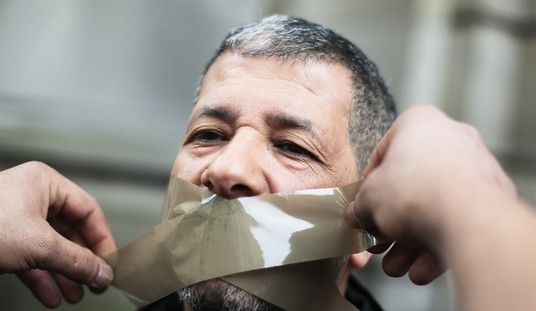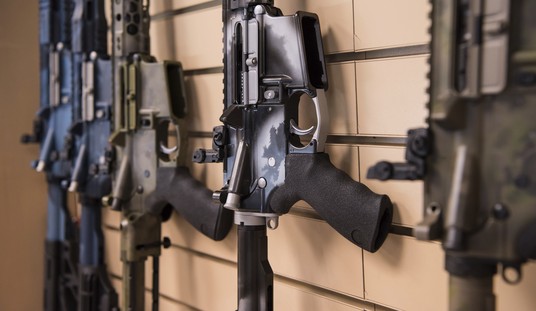
credit: www.zimbio.com
Those that live to restrict the fundamental freedoms of others do not restrict their efforts only to firearms, but often engage in the suppression of all weapons–or anything that might resemble one. Such is the case at North Dakota State University, a part of the country not generally known for a rarity of common sense. Townhall.com has the story:
“Fencing, an Olympic sport sponsored by more than 30 NCAA schools, involves two athletes engaging in what is effectively a sword fight with a foil, saber, or épée. The equipment is blunted and does not have any actual blades or sharp tips. Unfortunately, for the newly-formed club fencing team at North Dakota State University, fencing equipment counts as a weapon, and the club has been barred from practicing on campus.”
Is this policy a rational response to real potential threats, or an ill-considered overreaction? Full disclosure: I am the co-founder and first Vice President of the Wyoming Division of the United States Fencing Association. I also have many years of experience in Kendo and Iaido–Japanese fencing and sword drawing.
Fencing has its roots in Europe and because America never embraced fencing as part of its unique culture, it has never caught on as a popular sport, though Americans have done very well in international competition, including the Olympics. Part of the problem is that is so fast. The fencers face each other, there are several quick beats of their blades, a flashing lunge and a point is scored. Add four more points and a bout is over with the non-fencing audience having little idea what happened or how.


These are the three swords used in modern sport fencing. These are practice swords. Competition swords are “electric,” or wired to allow scoring that does not rely on the human eye. The top sword is a foil, which is the basic sword all fencers learn to use. It has a blade that is square in shape and very flexible. The entire sword is very light, and is wielded easily through wrist action. The blade is about 35” long.
The middle sword is the epee (eh-peh), which is modeled on the rapier (ray-peer) of the Renaissance. When Mercutio and Tybalt dueled in Romeo and Juliet, they would have wielded rapiers and perhaps parrying daggers. It is substantially heavier than the foil, has a larger handguard, and a much stiffer blade triangular in shape. While it is light enough to be manipulated by the wrist, much more of the arm is necessary to use it properly.
The sword at the bottom is a saber, modeled on cavalry sabers. It is normally somewhere between the foil and epee in weight and in blade flexibility. Its blade is formed in something of a square shape.
Readers will notice that none of the blade have sharp points, and none, even the saber, are actually sharpened. There is no question that if the protective tips were removed and the tips of the blades sharpened, they would be capable of causing injury, even death, but I am unaware of any sport fencing sword ever being employed as a real weapon anywhere.
Fencers do treat their swords with the respect due any weapon, but this is more a matter of tradition and the discipline of the sport than out of necessity. Properly maintained, these are not at all dangerous or deadly weapons.

These implements are the swords used in Kendo. The top sword is a Shinai (shih-niy). It is made of four flexible bamboo staves bound together. When they strike the Kendo armor known as Bogu (bow-goo) they flex rather than breaking, and cause no harm to the fencer. They are never used to strike unarmored opponents.
The bottom sword is a Bokken (bow-ken) used in practicing forms and technique. They are not used to strike opponents, but for developing skills and for warm ups. This particular sword is made of Maple, and is shaped–more or less–like a Katana.

This sword is not a Katana, but an Iaito (ee-eye-toe), a sword used in the practice of sword drawing. It is lighter than a katana, and is not sharpened, though the point could do considerable damage with a thrust. The Iaito is used for this training because a Katana–a live blade–is far too dangerous, capable of cutting completely through the scabbard and the student’s hand if concentration lapses for an instant. Iaido (ee-eye-doe) consists of 12 specific exercises (kata) that replicate actual swordsmanship. It is not done opposite an opponent.
None of these swords is a real weapon. They are not designed as weapons. They lack the configuration, weight, balance, type and quality of materials, and manufacturing techniques of actual swords. They are sporting implements, nothing more, and as sporting implements go, they are actually less dangerous than many others.
Wielded properly, the Iaito and Bokken could cause real damage, but as with the European sport fencing swords, I don’t believe any of them have ever been used to that end. On the other hand, baseball bats, golf clubs, hockey sticks, and similar instruments are surely allowed on the campus of NDSU and each and every one of them has been used to injure and kill people.
And what of the NDSU theater department? Serious actors study fencing as a part of their education. Many plays require not only the carrying of swords–for centuries they were as much badges of station as weapons–but the occasional duel. Will they be exempt from the weapon rule, or will NDSU Thespians simply have to forgo historical accuracy, classical training and essential plot elements for politically correct purity?
Likewise, the profusion of potential weapons in the University maintenance shop, agriculture department and industrial arts department are terrible to imagine. Hammers, axes, chisels, screwdrivers, razor knives of many kinds, hand and power saws–all of these have been used to harm and kill the innocent. In fact, people have actually been injured–some seriously–with pencils and pens, and those deadly weapons are everywhere on a college campus.
Even the high school where I teach, which also has a weapon policy, allowed our theater department the use of modified fencing swords when I was called upon to design and teach a duel for a recent production. No one had to ask for permission–common sense prevails–and everyone escaped unscathed.
Fencing, Kendo and Iaido are not only physical training, but intellectual and spiritual training as well. As with the shooting sports, mastering the sword is mastering its user. Banning what are clearly not weapons makes precisely as much sense as arresting children playing with plastic toy guns for aggravated assault simply because their toys are made in the image of real guns. Banning the sport swords used in intercollegiate athletics and the Olympics should cause NDSU administrators nothing but embarrassment, and perhaps, shame.
Such ill-considered policies are often rescinded only when those that impose them are reminded of logic and common sense, and sometimes sufficiently embarrassed and reminded that their actions do not take place in a vacuum. This article is, hopefully, a part of that process.
The President of NDSU is Dean L. Bresciani. He can be reached through his Executive Assistant Barbara Pederson at: [email protected], and his Associate Executive Assistant Stephanie Wawers at: [email protected]
Of course, keep all e-mails to President Bresciani civil in tone and content, and encourage him to infuse rationality into these overly restrictive and unnecessary policies.
Mike’s Home blog is Stately McDaniel Manor.








Join the conversation as a VIP Member